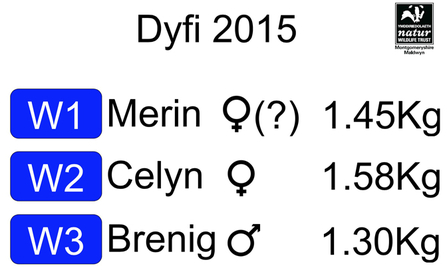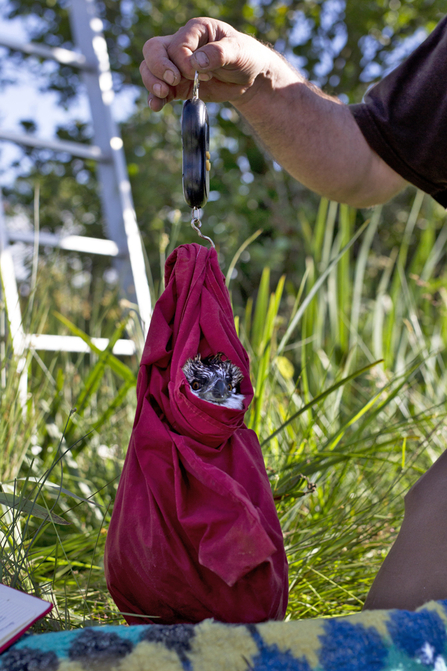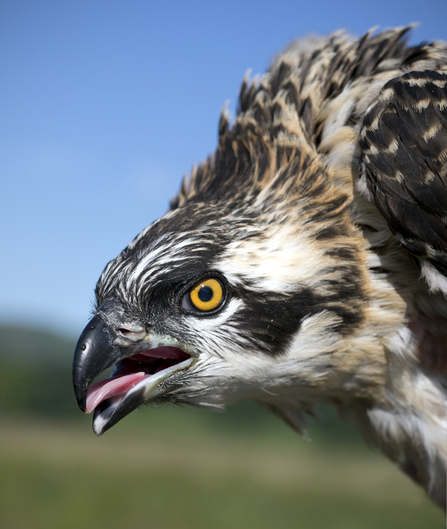***2017 UPDATE: DNA analysis in 2017 proved Merin to be a MALE***
On 3rd July, all three Dyfi osprey chicks were weighed, named and ringed. They were 35, 33 and 31 days old and we kept to the tradition of naming them after Welsh rivers and lakes.
Here they are with the oldest on top (Blue W1) and youngest at the bottom (Blue W3).



